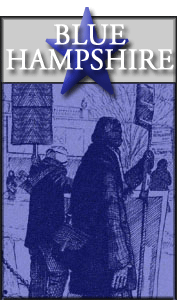(OMG this is a tremendous amount of very useful work. Thank you! - promoted by Dean Barker)
The Cook Partisan Voting Index (PVI) compares how a congressional district votes relative to the nation as a whole. The index objectively measures each congressional district as a means to allow comparisons between districts that are relevant in both mid-term and presidential election years.
The index is derived by averaging a district's voting results from the previous two presidential elections and comparing them to national results. The result indicates the number of percentage points by which the party's vote exceeded the national average.
For example, a D+2 PVI means the district performed two points more Democratic than the nation did as a whole in the 2004 and 2008 presidential elections. The Democratic candidates would have received roughly 53.3% of the two-party vote compared to the national two-party average of 51.3%.
Using this same methodology, I have calculated the PVI for each New Hampshire voting ward and created a map of the results.
158 of the state's 299 voting wards with at least 25 votes in the 2008 presidential election lean Democratic. They are led by Hanover as the most Democratic ward in New Hampshire with a D+29 PVI. 118 wards lean Republican. The most Republican voting ward in the state (with at least 200 votes) is New Ipswich in Hillsborough county with a R+16 PVI.
Next, I calculated the 2004 PVI and compared it to the 2008 index. The results confirm the extent to which New Hampshire, and particularly CD-2, is trending blue. In just four years, 186 wards have become more Democratic by at least two points compared to only 23 wards that have become more Republican by the same margin.
This study utilizes data previously collected and cataloged by my wife, Judy Stadtman, for her excellent series of maps illustrating New Hampshire voting results since 2000. Thanks to Dean Barker for suggesting the study. All of the maps and data can be viewed and downloaded here.
|
